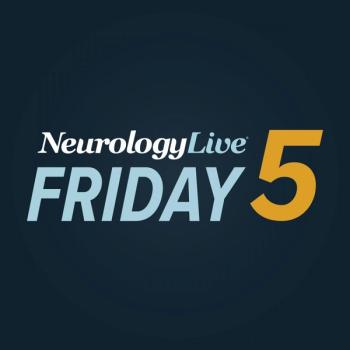
Studying an Oral Nighttime Therapy in Mild to Severe Obstructive Sleep Apnea: The LunAIRo Trial
Key Takeaways
- Obstructive sleep apnea affects millions but remains largely undiagnosed and untreated, with no approved pharmacologic therapies targeting its neuromuscular dysfunction.
- AD109, a combination of aroxybutynin and atomoxetine, is under evaluation in the phase 3 LunAIRo study for its efficacy and safety in treating OSA.
Following positive phase 3 findings, Apnimed plans to submit a new drug application to the FDA in early 2026 for its lead candidate AD109 as a potential treatment of obstructive sleep apnea.
Obstructive sleep apnea (OSA) is known as a chronic and potentially serious disorder in which the upper airway repeatedly collapses during sleep, causing intermittent drops in oxygen levels. It results from a combination of neuromuscular dysfunction during sleep and anatomical predispositions. OSA can affect patients of all genders, ages, ethnicities, and body types including those without obesity, and is estimated to impact 80 million patients in the United States. Despite the sleep disorder’s prevalence, up to 80% of cases remain undiagnosed and untreated.1
Individuals with OSA may experience hundreds of breathing disruptions each night, leading to reduced oxygen levels that impair essential cellular functions. If left untreated, OSA can significantly increase the risk of long-term health issues such as cardiovascular disease, cognitive decline, metabolic disorders, and early death. However, most diagnosed patients either do not initiate, discontinue, or inconsistently use current treatments. Presently, there are no approved pharmacologic therapies that directly target the neuromuscular dysfunction central to the disorder.
The investigational oral therapy AD109 (Apnimed), a combination of aroxybutynin and atomoxetine, is currently being evaluated in the phase 3 LunAIRo study (NCT05811247), a randomized, double-blind, placebo-controlled, 1-year parallel-arm study of patients with mild to severe OSA. The trial, enrolling at least 660 participants aged 18 years and older from 64 clinical centers across the US, is designed to examine the efficacy and safety of the investigational agent compared with placebo.2 The study’s primary end point includes measuring the proportion of participants who experience a reduction in apnea-hypopnea index (AHI) via polysomnography at 6 months and 1 year.
If successful, AD109 could become the first medication to address both the nighttime airway obstruction and oxygen deprivation central to OSA, as well as its daytime symptoms, such as fatigue. Taken once nightly at bedtime, this potential first-in-class combination targets neurological pathways involved in activating upper airway dilator muscles to help keep the airway open during sleep. Designed for use across varying levels of disease severity, AD109 offers the promise of a safe, effective, and more user-friendly alternative to current OSA treatments, which are often invasive or difficult for patients to tolerate.
Eligible participants of the trial were adults aged 18 years or older who met specific polysomnography parameters, including an AHI greater than 5, with no more than 25% of events classified as central or mixed apneas and a periodic limb movement arousal index of 15 or less. Individuals also needed to report significant fatigue, as indicated by a PROMIS-Fatigue raw score of at least 17. Additional requirements included intolerance to or refusal of positive airway pressure therapy and a body mass index ranging from 18.5 to 40 kg/m² for men or up to 42 kg/m² for women.
Participants were excluded if they had a diagnosis of narcolepsy, restless leg syndrome, or REM sleep behavior disorder. Those with insomnia marked by difficulty falling or staying asleep, or recent use of medications targeting insomnia symptoms, were also ineligible. Other exclusions included the presence of craniofacial syndromes such as Pierre Robin or Treacher Collins, or grade 3 or higher tonsillar hypertrophy. Individuals with clinically significant heart conditions, such as unstable coronary artery disease or ventricular arrhythmias, were excluded although stable atrial arrhythmia was permitted. Neurological exclusions encompassed neuromuscular disorders, epilepsy, and neurodegenerative diseases such as Parkinson, Alzheimer, or related conditions.
“The LunAIRo study is a complimentary study to SynAIRgy, a 6-month trial looking at safety and efficacy [of AD109]. LunAIRo is looking at safety and efficacy of [AD109] in a fairly similar population of over 600 participants,”
“We're also doing some substudies within LunAIRo looking at a more robust analysis of cardiovascular impact. There's a substudy that we've done looking at ambulatory blood pressure. Those data are not fully analyzed. I imagine probably very shortly there will be an announcement of the topline results of LunAIRo, but right now I can't really speak about results,” Strollo said. “But that's the difference between LunAIRo versus SynAIRgy, and they should be complementary in terms of helping us understand safety and efficacy and also reassuring the FDA when the company goes to the agency, probably in early 2026.”
AD109 first demonstrated therapeutic potential in the phase 3 SynAIRgy trial (NCT05813275), which tested the agent across a broad range of patients with mild, moderate, and severe OSA. In the study, the treatment
Considered the largest such drug trial for OSA, SynAIRgy included 646 adults with the disease who were intolerant of or currently refusing continuous positive airway pressure (CPAP). Coming into the study, 34.4% of patients had mild OSA, 42.4% had moderate, and 23.2% had severe. Overall, treatment with AD109 led to a statistically significant change in AHI, the primary end point, over a 26-week period relative to placebo (P = .001).
In SynAIRgy, patients underwent a polysomnogram on treatment at week 4. Overall, treatment with the oral agent led to meaningful improvements in oxygenation, as assessed by hypoxic burden (P <.0001), and oxygen desaturation index (P = .001). Furthermore, 51.2% of treated patients experienced a reduction in OSA disease severity, and 22.3% achieved complete disease control, defined as an AHI of fewer than 5 events per hour.
“Existing data suggests that up to 50% of patients with sleep apnea cannot or will not tolerate CPAP in the long term. There's a huge unmet need for all of these patients with sleep apnea, and there's a range of different treatment options being developed. AD109 is one of them that really is targeting neuromuscular function,” study chair
In a previous phase 2 trial, dubbed MARIPOSA (NCT05071612), treatment with AD109 demonstrated statistically significant improvements on both objective and subjective outcomes in patients with OSA. The study featured 211 patients (41% female) with a median age 55 (48-60) years and BMI of 32.2 (28.0-35.2) kg/m2 who were randomized to AD109, atomoxetine, or placebo. All told, AHI4 was reduced from a median of 20.5 to 10.8 events/hour in the AD109 2.5mg/75 mg dose (P <.001 vs placebo).3
Additional data showed that 41% of participants who completed the study achieved an AHI below 10 when treated with AD109, 44% had greater than 50% reduction from baseline, and 15%. Of treated patients had an 80% or greater reduction. Notably, atomoxetine, dosed as a monotherapy, did not improve daytime OSA symptoms, and statistically significantly worsened nighttime sleep subjectively and by the measurement of total sleep time, indicating that atomoxetine alone is an inappropriate therapy for OSA.
AD109-treated patients also demonstrated statistically significant improvements vs placebo in PROMIS-Fatigue, a scale of daytime functioning (P <.05). The investigational agent also showed a trend towards statistically significant on scales measuring other important OSA symptoms such as PROMIS-Sleep Impairment and PROMIS-Sleep Disturbance.
REFERENCES
1. Apnimed Announces Positive Topline Results in the First Landmark Phase 3 Clinical Trial of AD109, an Investigational Once-Daily Oral Pill for Obstructive Sleep Apnea. News Release. Apnimed. Published May 19, 2025. Accessed June 25, 2025. https://apnimed.com/article/ad109phase3toplineresults/
2. Apnimed Announces Completion of Enrollment in Phase 3 LunAIRo Study of AD109, the Potential First Nighttime Oral Treatment for Obstructive Sleep Apnea. News Release. Apnimed. Published May 9, 2024. Accessed June 25 2025. https://apnimed.com/article/apnimed-announces-completion-of-enrollment-in-phase-3-lunairo-study-of-ad109-the-potential-first-nighttime-oral-treatment-for-obstructive-sleep-apnea/
3. Apnimed Presented Positive Phase 2b Results on AD109, an Investigational Oral Drug for Obstructive Sleep Apnea, for the First Time at ATS 2023. News release. Apnimed. May 21, 2023. Accessed June 25, 2025. https://apnimed.com/article/apnimed-presented-positive-phase-2b-results-on-ad109-an-investigational-oral-drug-for-obstructive-sleep-apnea-for-the-first-time-at-ats-2023/
Newsletter
Keep your finger on the pulse of neurology—subscribe to NeurologyLive for expert interviews, new data, and breakthrough treatment updates.


































